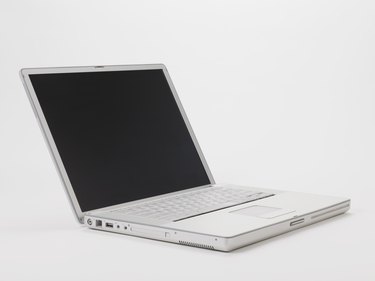
If the white balance on your camera is not calibrated properly, or if there is too much light streaming onto the face of your subject, you will likely end up with an overexposed face when you take digital photographs. Using a basic tool in Adobe Photoshop, you can correct the effects of an overexposed face without changing the exposure of the entire photo and without spending hours trying to mend a few pixels' worth of damage.
Step 1
Open Adobe Photoshop or Adobe Photoshop Elements and navigate to the Standard Edit area. Open the file you wish to correct by selecting "File -> Open" or the "Open" folder in the toolbar.
Video of the Day
Step 2
Look at the left-hand side of your workspace and select the "Burn" tool. There are technically three tools underneath the same icon: the Sponge tool, the Dodge tool and the Burn tool. If the Sponge tool is currently selected, this tool will look like a sponge. If the Dodge tool is currently selected, the icon will resemble a stick with a circle on top. If the Burn tool is currently the default, you'll see a hand shaped in the letter "O."
To select the Burn tool when another tool is the default, simply press the tiny arrow button on the bottom left corner of the tool select "Burn."
Step 3
Select the brush size you need by clicking on the brush menu at the top of the workspace. You can choose from solid brushes and thin lines; choose a thicker brush for entire facial corrections.
Step 4
Change the diameter of the Burn tool to match the amount of correction you want to make on the overexposed face by clicking on the "size" menu at the top of the workspace. If you want to make tiny corrections, keep the tool under 10 pixels. A tool measured at 15 to 20 pixels should be sufficient to make medium corrections on the face.
Step 5
Select the range and exposure preferences. To supply the subject with a hefty suntan, choose the shadows selection. For a regular skin tone fix, select midtones. Start with a low exposure setting, preferably between 5 and 10 percent. You can always go back over light sections with a low setting as opposed to starting out with a setting that's too dark.
Step 6
Press and drag the Burn tool over the overexposed face. Start at the top and work your way to the bottom, making sure you don't leave out any pixels of light skin. You'll notice the face begin to turn more tan and less shiny. If you need to extend this setting to the neck or other skin areas to even out the skin tone, do so after you bring the face color to the right tones.
Step 7
Select the "Save" icon or the "File -> Save" command to save your work.
Video of the Day